Google Pixel 8 Pro vs iPhone 15 Pro: the key differences
Which Pro should you go with?
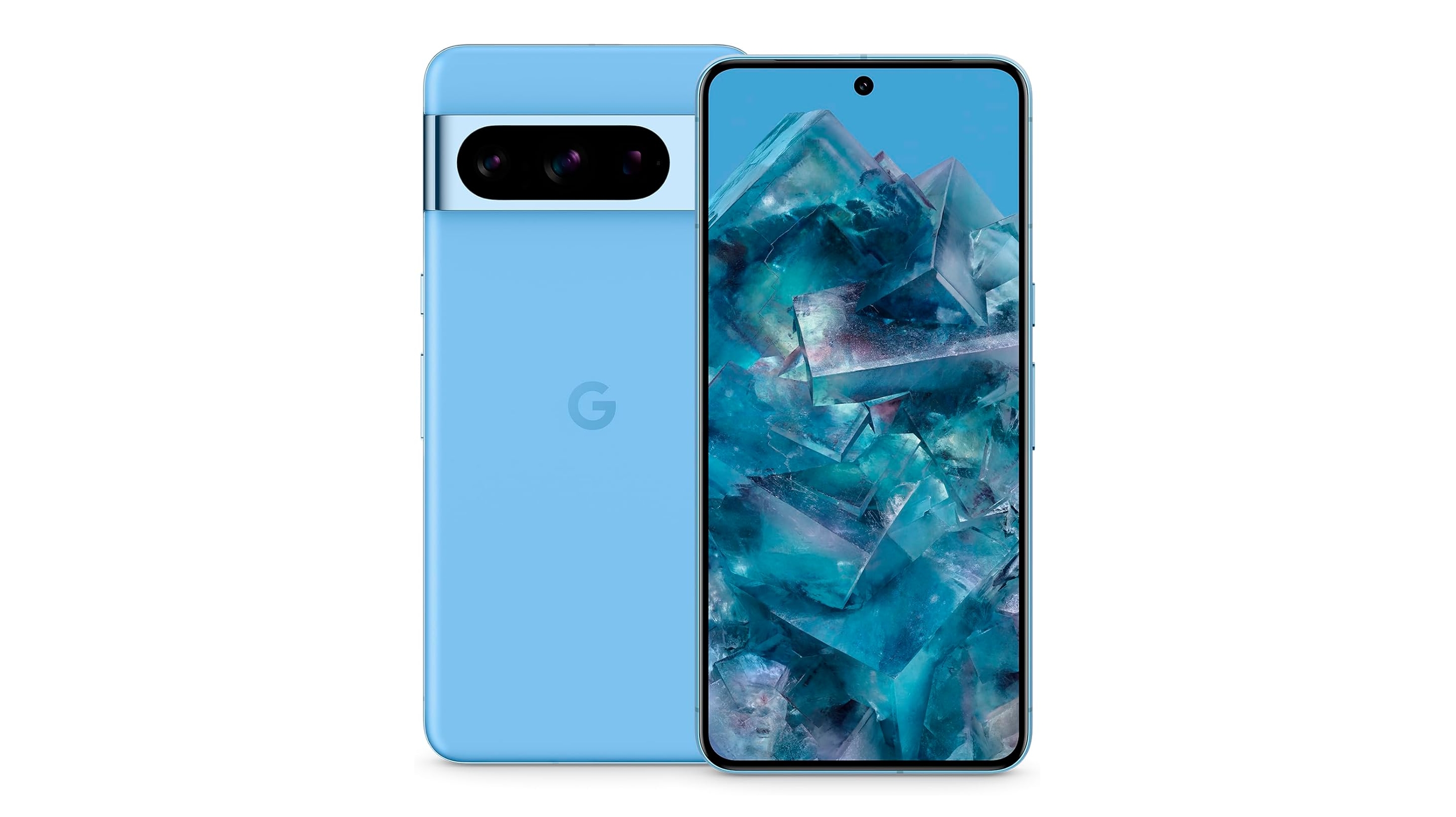
Weight: 213g
Dimensions: 162.6 x 76.5 x 8.8mm
Screen size: 6.7-inch
Resolution: 1344 x 2992
CPU: Tensor G3
RAM: 12GB
Storage: 128GB/256GB/512GB/1TB
Battery: 5,050mAh
Rear camera: 50MP+48MP+48MP
Front camera: 10.5MP
The Pixel 8 Pro has a superb screen and clever cameras, but it's let down slightly by a lack of power relative to the iPhone 15 Pro.
For
- Great new cameras
- Better battery life
- A very bright screen
Against
- More expensive than before
- Some AI features feel creepy
- Less powerful than rivals
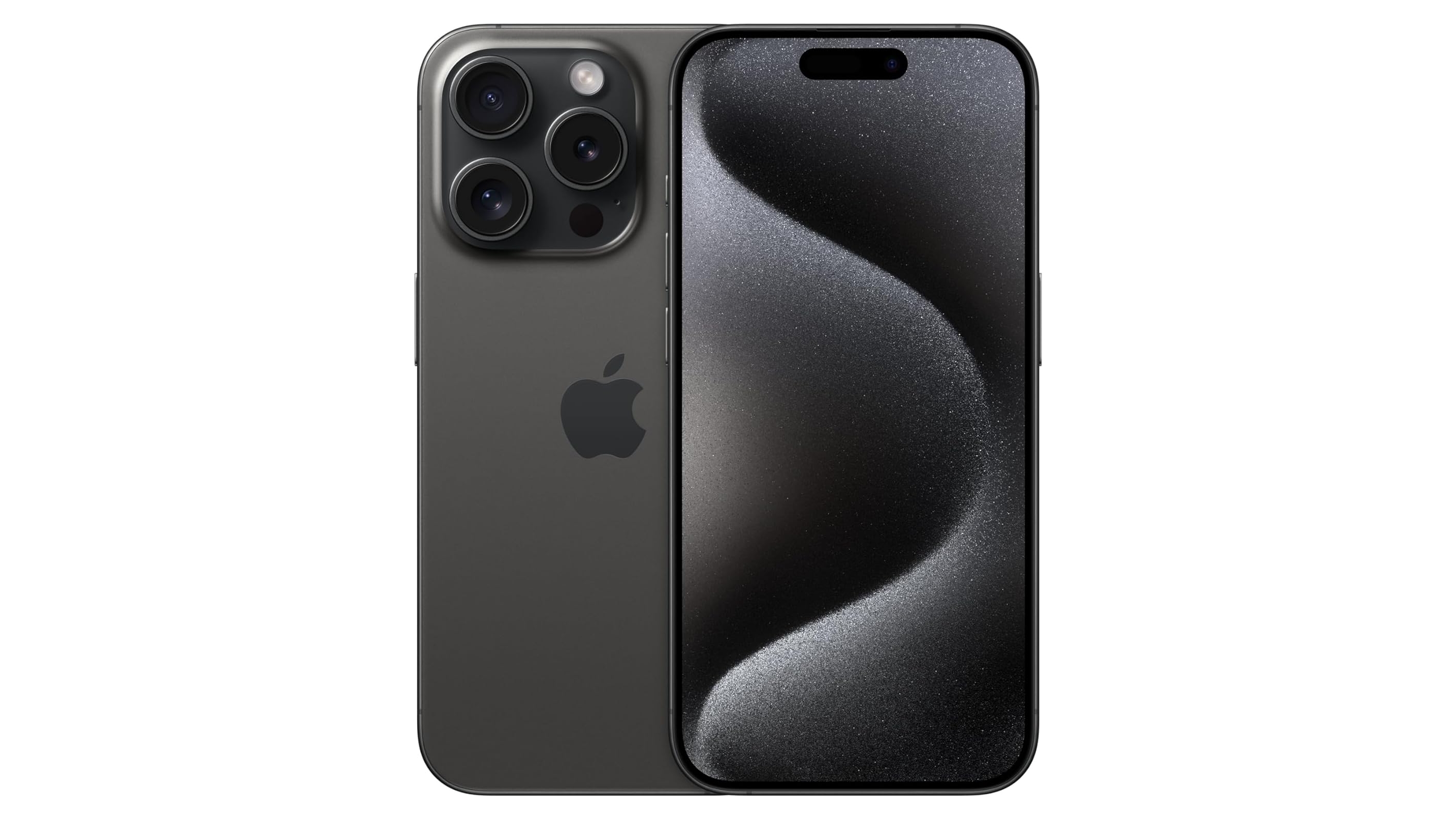
Weight: 187g
Dimensions: 146.6 x 70.6 x 8.3mm
Screen size: 6.1-inch
Resolution: 1179 x 2556
CPU: A17 Pro
RAM: 8GB
Storage: 128GB/256GB/512GB/1TB
Battery: 3,274mAh
Rear camera: 48MP+12MP+12MP
Front camera: 12MP
The iPhone 15 Pro is extremely powerful, and it's also smaller and lighter than the Pixel 8 Pro, but it's slightly behind Google's flagship in most other specs.
For
- Beautiful titanium design
- Finally, USB-C connectivity
- All new A17 Pro chip
Against
- Niche camera upgrades
- No change to battery longevity
- Limited to 3x zoom
It’s the battle of the Pro phones, as following Apple’s iPhone 15 Pro launch, Google unveiled the Pixel 8 Pro just a month later.
These two phones are very different in one obvious way – namely one runs iOS and the other Android – but beyond that they have a lot of other differences too, as well as a number of similarities.
For a closer look at how these phones compare then – including both their specs and the impressions we had in our Google Pixel 8 Pro review and our iPhone 15 Pro review – read on, as while both rank among the best phones, one might be a much better fit for you than the other.
Google Pixel 8 Pro vs iPhone 15 Pro: specs comparison
Before we look more closely at the similarities and differences between the Google Pixel 8 Pro vs iPhone 15 Pro, here’s a list of their core specs, so you can see how they stack up at a glance, on paper.
| Google Pixel 8 Pro | iPhone 15 Pro | |
|---|---|---|
| Dimensions: | 162.6 x 76.5 x 8.8mm | 146.6 x 70.6 x 8.3mm |
| Weight: | 213g | 187g |
| Display: | 6.7-inch 'Super Actua' LTPO OLED | 6.1-inch 'ProMotion Super Retina XDR' OLED |
| Resolution: | 1344 x 2992 | 1179 x 2556 |
| Refresh rate: | Adaptive 1Hz to 120Hz | Adaptive 1Hz to 120Hz |
| Chipset: | Google Tensor G3 | A17 Pro |
| RAM: | 12GB (LPDDR5X) | 8GB |
| Storage: | 128GB, 256GB, 512GB, 1TB (UFS 3.1) | 128GB, 256GB, 512GB, 1TB |
| Rear cameras: | 50MP wide, 48MP ultra-wide, 48MP 5x zoom | 48MP wide, 12MP ultra-wide, 12MP 3x telephoto |
| Front camera: | 10.5MP | 12MP |
| Battery: | 5,050mAh | 3,274mAh |
| Charging: | 30W wired, 23W wireless (2nd-gen Pixel Stand), 12W wireless (Qi) | 27W wired, 15W wireless (MagSafe), 7.5W wireless (Qi) |
| Colors: | Obsidian, Porcelain, Bay | Black Titanium, White Titanium, Blue Titanium, Natural Titanium |
Google Pixel 8 Pro vs iPhone 15 Pro: price and availability
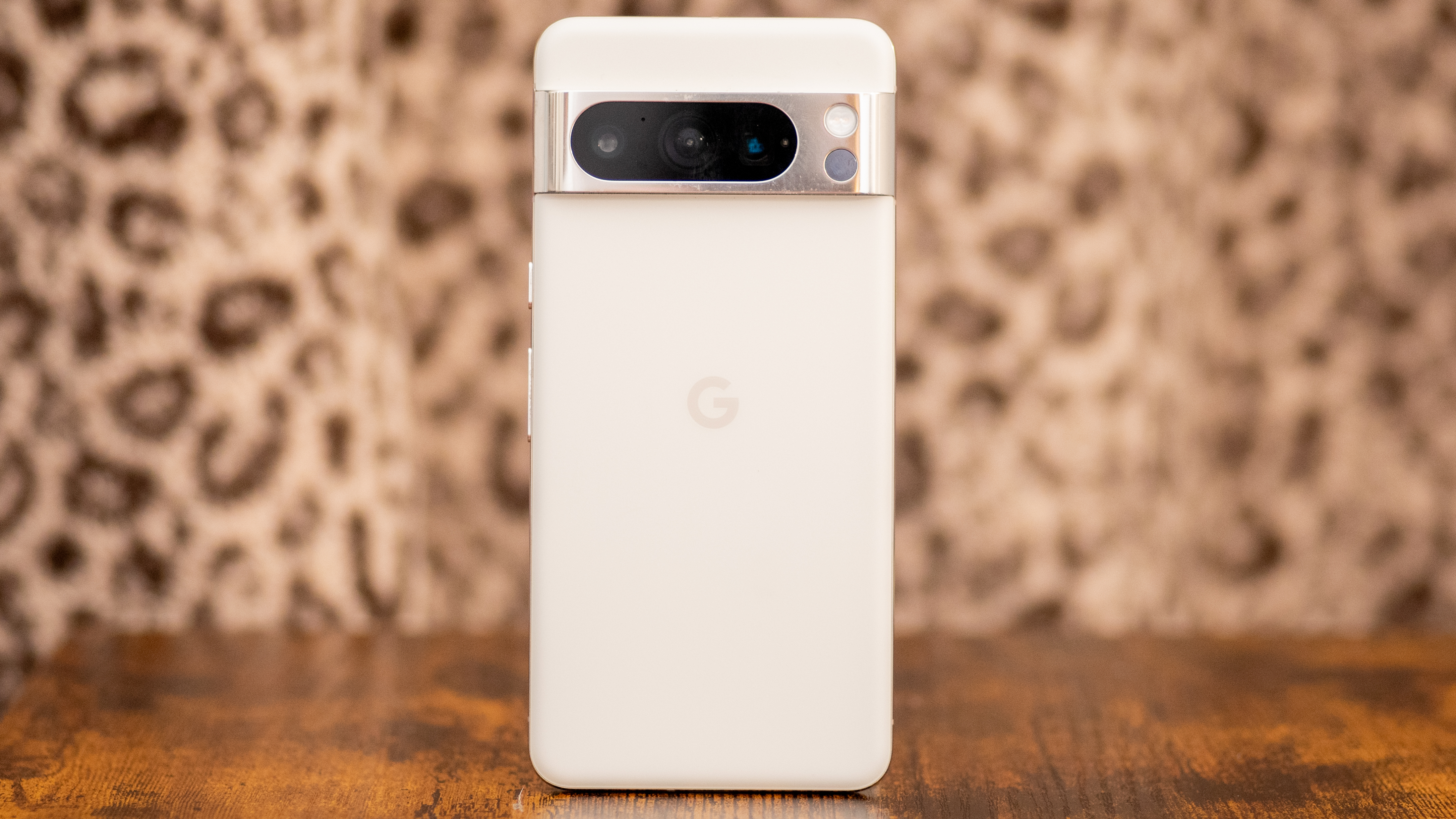
These two phones launched less than a month apart, with the Google Pixel 8 Pro arriving on October 12, 2023, and the iPhone 15 Pro landing on September 22, 2023.
As we mentioned in the intro, both of these phones start from $999 / £999. There’s a slight difference in Australian pricing, with the Pixel 8 Pro costing AU$1,699 and the iPhone 15 Pro costing AU$1,849, but essentially they cost the same.
It’s interesting how differently that almost-£1,000 figure is being viewed in relation to these two handsets. The Google Pixel 8 Pro price represents a £100 price bump over the previous year’s Google Pixel 7 Pro, which makes it seem somewhat expensive. With the iPhone 15 Pro, on the other hand, the same figure represents a price freeze in the US and a price cut in the UK. It somehow seems like good value.
The 256GB model of the Pixel 8 Pro costs $1,059 / £1,059 / AU$1,799, while the 512GB model costs $1,179 / £1,179 / AU$1,999, and the 1TB model costs $1,399. There is no 1TB option in the UK or Australia.
The 256GB model of the iPhone 15 Pro costs $1,099 / £1,099 / AU$2,049, while the 512GB model costs $1,299 / £1,299 / AU$2,399, and the 1TB model costs $1,499 / £1,499 / AU$2,749.
There’s some differentiation as you move up the storage capacities, with the iPhone 15 Pro steadily getting more and more expensive than its rival, topping out at a $100 difference between the 1TB models.
Google Pixel 8 Pro vs iPhone 15 Pro: design and display
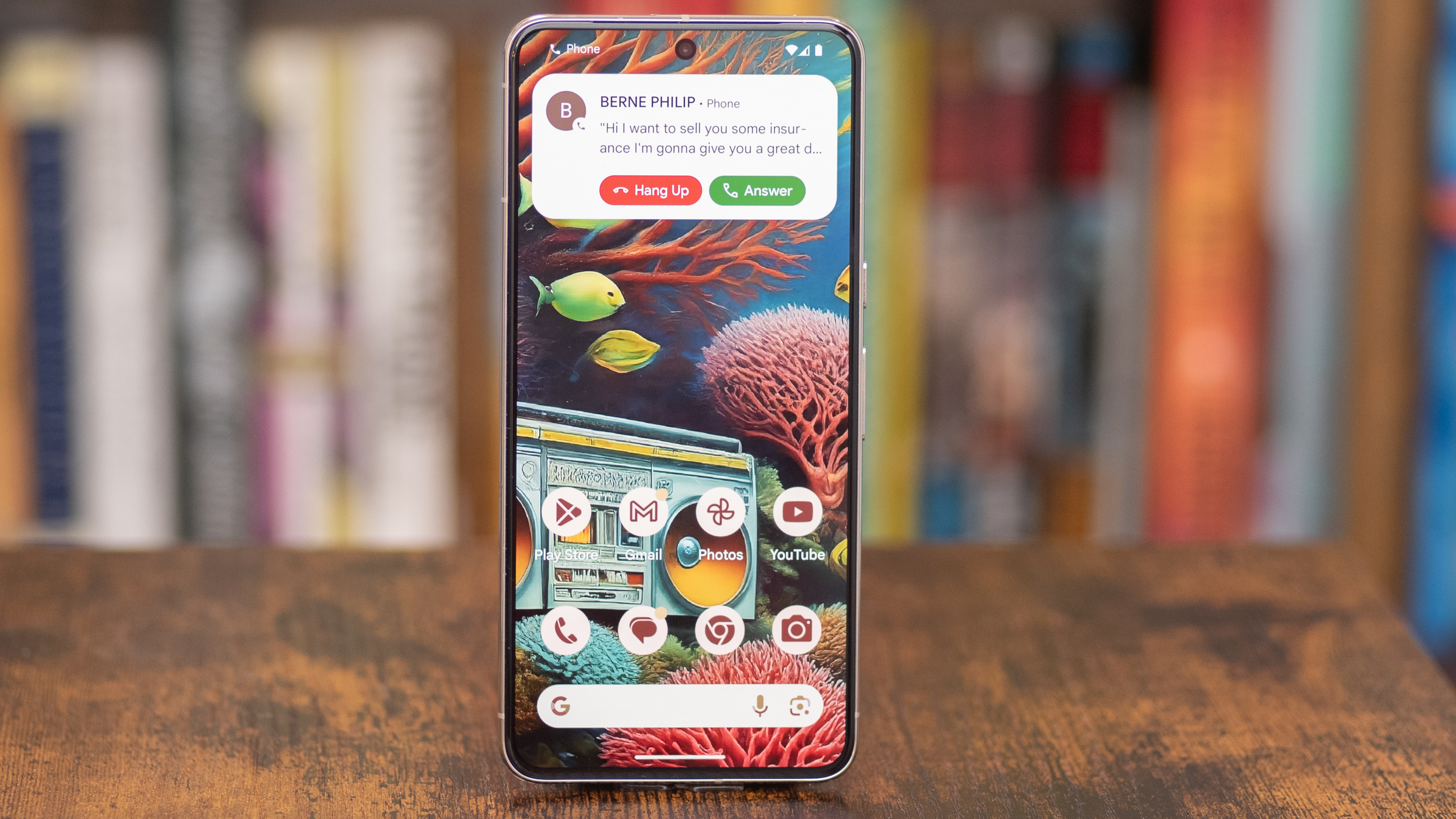
The Pixel 8 Pro has a glass back, with the now iconic camera visor running the width of it – which oddly also houses a temperature sensor, something you won’t get on any iPhone. The Pixel 8 Pro also has an aluminum frame, tiny bezels around the display, and a punch-hole camera in the top center.
The iPhone 15 Pro also has a glass back, but it has a more conventional camera block, with its trio of lenses situated in the top left corner. It also uses a more premium material – titanium – for its frame, and has a larger cut-out in the screen, though it’s also a more functional one, as it’s a Dynamic Island.
Both phones have toughened glass, and both have an IP68 rating (for dust and water resistance), but their weights and dimensions differ. The Google Pixel 8 Pro is 162.6 x 76.5 x 8.8mm and 213g, while the iPhone 15 Pro is smaller and lighter at 146.6 x 70.6 x 8.3mm and 187g.
Their colors also differ. The Pixel 8 Pro is available in Obsidian (black), Porcelain (white), and Bay (blue), while the iPhone 15 Pro can be had in Black Titanium, White Titanium, Blue Titanium, and Natural Titanium shades.
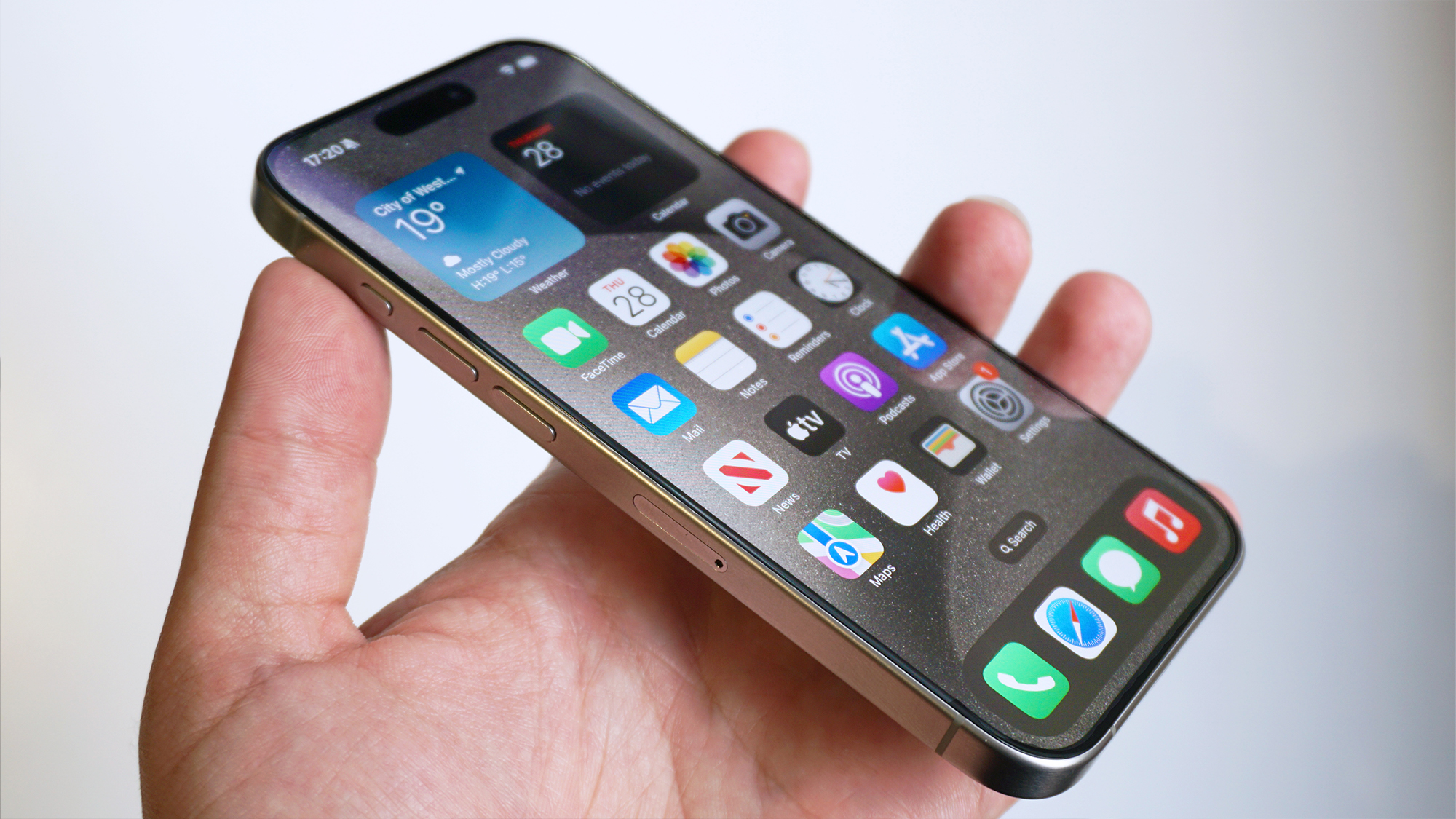
As for their screens, the Google Pixel 8 Pro has a 6.7-inch 1344 x 2992 OLED display with a 120Hz refresh rate, 489 pixels per inch, and a peak brightness of 2,400 nits. The iPhone 15 Pro has a 6.1-inch 1179 x 2556 OLED screen with a 120Hz refresh rate, 461 pixels per inch, and a peak brightness of 2,000 nits.
So the Pixel 8 Pro’s screen is bigger, brighter, and higher resolution – though its larger size means it still only has slightly more pixels per inch.
It’s arguably got the better display, with our Pixel 8 Pro review saying that it’s “the standout feature on the Pixel 8 Pro, this bright and sharp display is just as good as the iPhone 15 Pro Max, and maybe better.”
But we were very positive about the iPhone 15 Pro’s screen too, saying in our review that it has “a great adaptive 120Hz OLED with the best always-on display implementation out there.”
Google Pixel 8 Pro vs iPhone 15 Pro: cameras
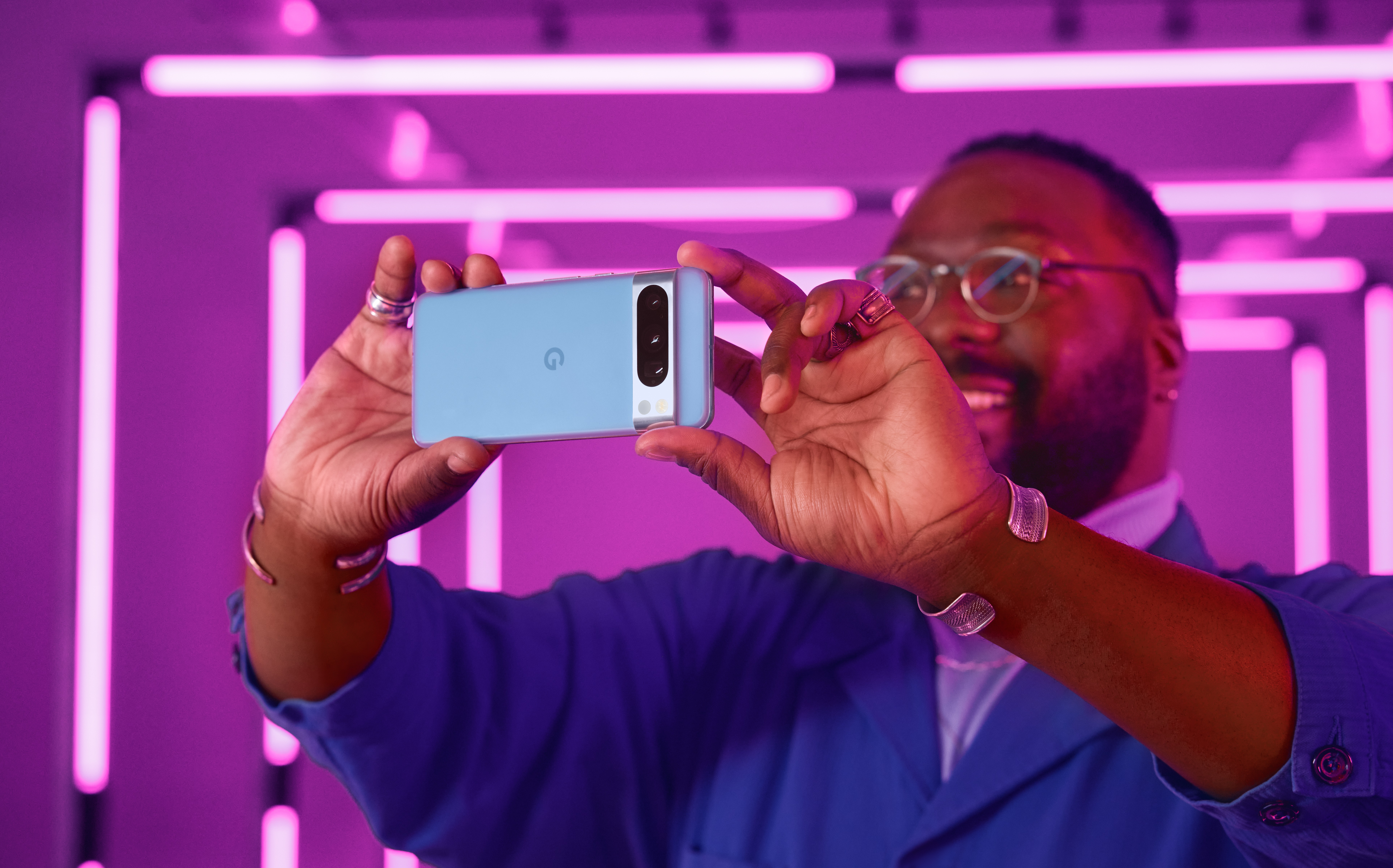
These are two of the best camera systems on the smartphone market, and both have their stand-out strengths.
The Pixel 8 Pro doesn’t shake things up too much from the Pixel 7 Pro. It’s another 50MP main sensor, albeit with a wider f/1.65 aperture, which also happens to be wider than the iPhone 15 Pro’s f/1.8. However, at 1/1.28“, the iPhone 15 Pro’s 48MP sensor is fractionally bigger than the 1/1.31” Pixel 8 Pro equivalent.
Apple has changed things up more than Google this year with a switch to taking 24MP shots as standard. This results from the fusion of a 12MP image and a 48MP full-resolution shot, which maximizes detail, color depth, and dynamic range. The Pixel 8 Pro still takes 12MP snaps as standard.
Google hits back in hardware number-crunching terms with its other sensors, starting with a 48MP ultra-wide to the iPhone 15 Pro’s 12MP. Perhaps more importantly, it also has a 48MP telephoto camera with a 5x zoom range. Apple opted not to bring across the new 5x telephoto from the iPhone 15 Pro Max, leaving it stuck on stuck on 3x.
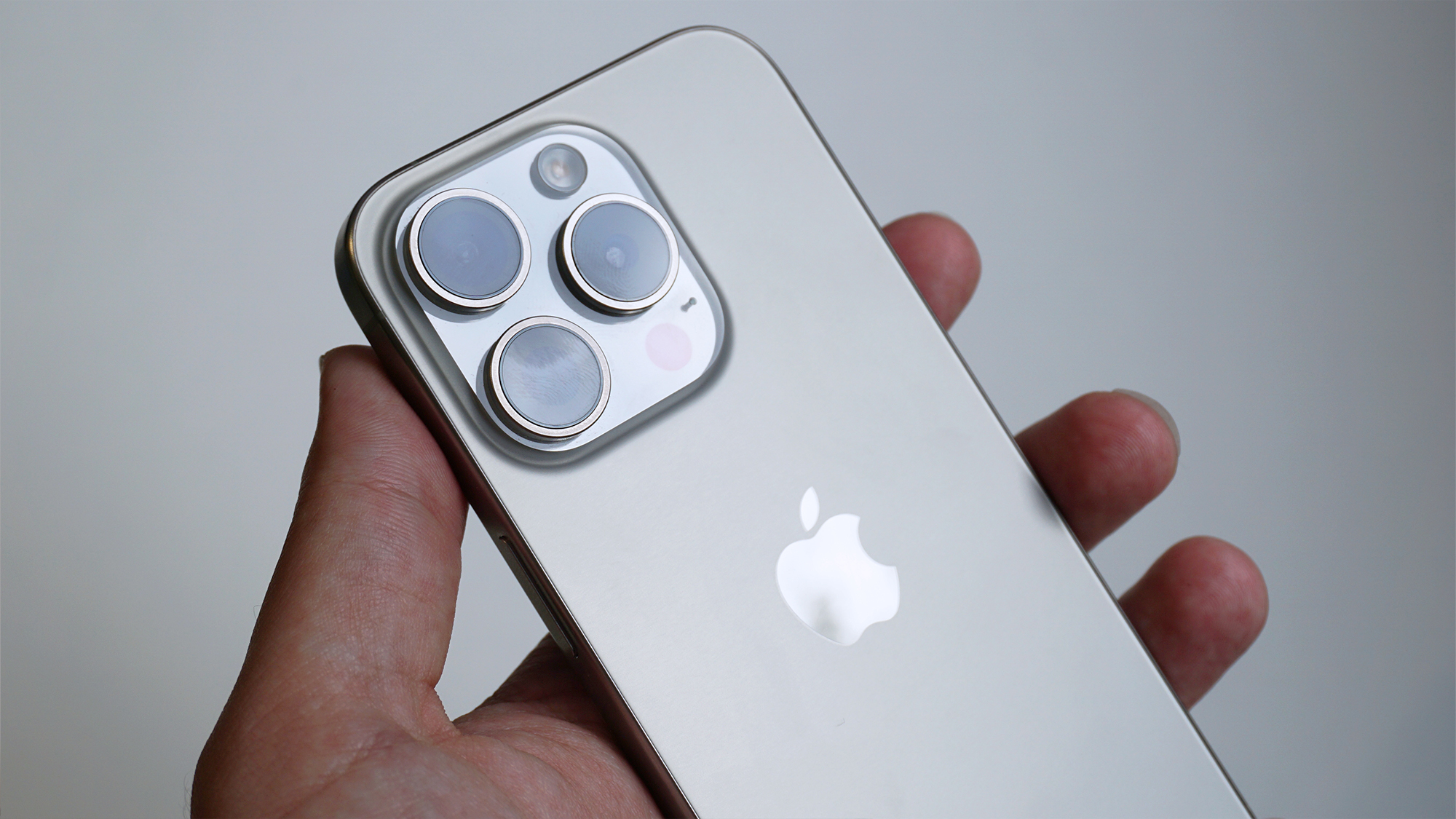
It’s tit-for-tat on the camera hardware front, but the smartphone camera battle is largely being fought in software and image processing these days. On a basic level, that’s evident in the shooting style that the two companies go for. Broadly speaking, Google’s look tends to favor dynamic range pumping up clarity in shadows and reigning in bright spots to offer, dare we say, more Insta-worthy shots, while Apple’s photo processing is more natural and, dare we say, more print-worthy.
Both camera systems have learned some impressive new tricks, too. The iPhone 15 Pro lets you select a portrait shot after you’ve taken an image, with all the necessary depth information naturally captured whenever you snap a face (human, cat, or dog).
The Pixel 8 Pro, for its part, lets you adjust the expression on individual faces in group shots, so you can get everyone smiling at once, even if they never were in reality. We’re still not sure how we feel about the integrity of that, but it’s a cool trick nonetheless. Magic Eraser is better than ever, too, letting you remove unwanted photobombers with a tap.
All that really matters is the image quality of course, and in our testing it varied from shot to shot. Some photos looked better when taken with the Pixel 8 Pro, including macro shots and food shots, as well as zoomed-in images. Others looked better on the iPhone, most notably in low-light.
Google Pixel 8 Pro vs iPhone 15 Pro: performance and software
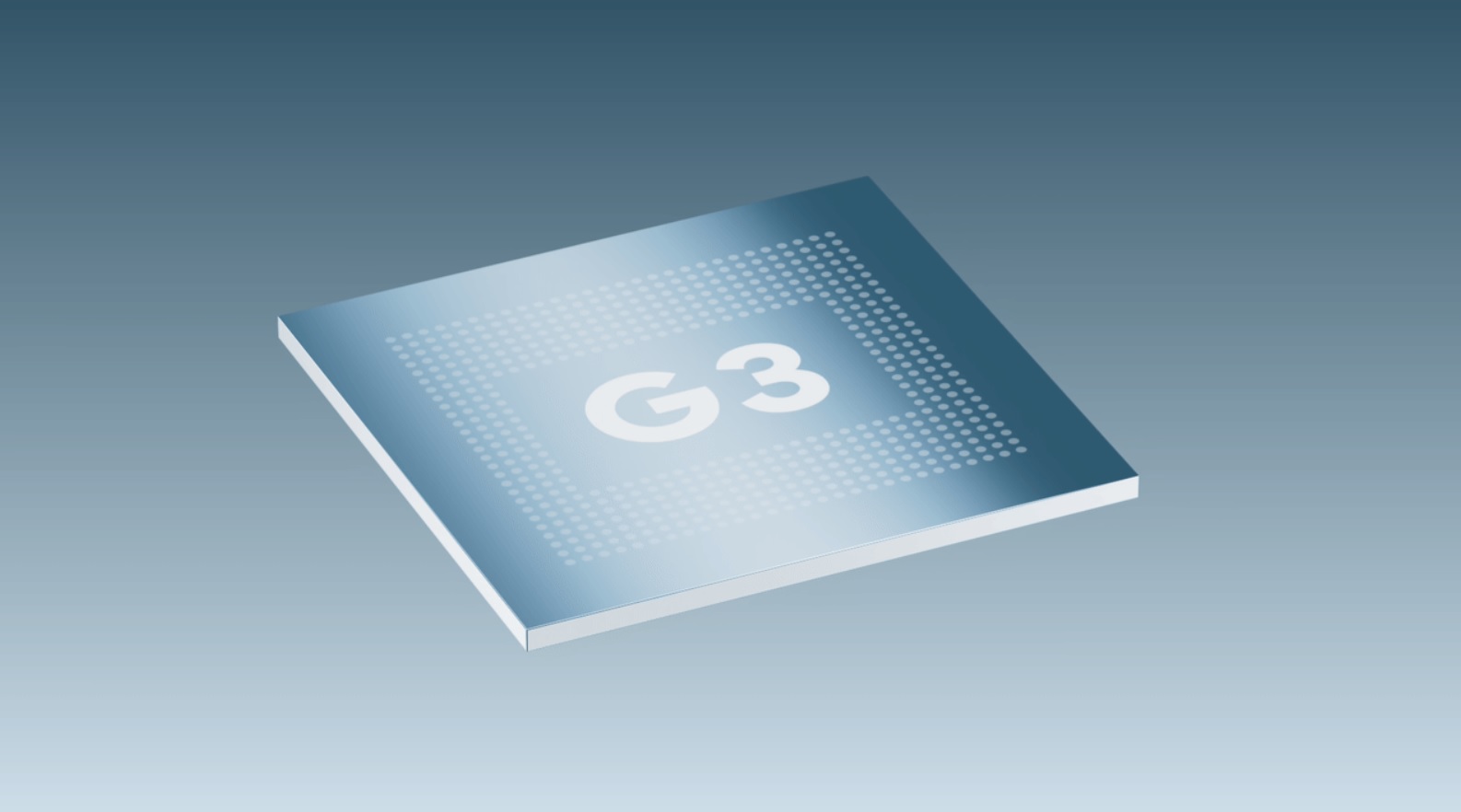
There’s a clear winner when it comes to raw performance, and that’s the iPhone 15 Pro. The benchmark numbers don’t lie, and Apple’s new A17 Pro chip absolutely smashes Google’s Tensor G3 with its raw CPU and GPU output.
It might have a third less RAM than the Pixel 8 Pro, but that doesn’t matter one jot. Apple’s iOS is famously more frugal than Android when it comes to memory usage.
In raw performance the compact iPhone 15 Pro is a much stronger proposition, capable of running console-quality games like Resident Evil Village reasonably well. The Pixel 8 Pro can run things like Genshin Impact on high settings, but not as well as other Android flagships, let alone Apple’s latest.
Despite all that, you probably won’t notice any of this in day-to-day use. Both phones feel plenty fast when doing what most of us do 95% of the time – scrolling through web pages, jumping back and forth in between apps, streaming video content, and blasting through the odd time-wasting game.
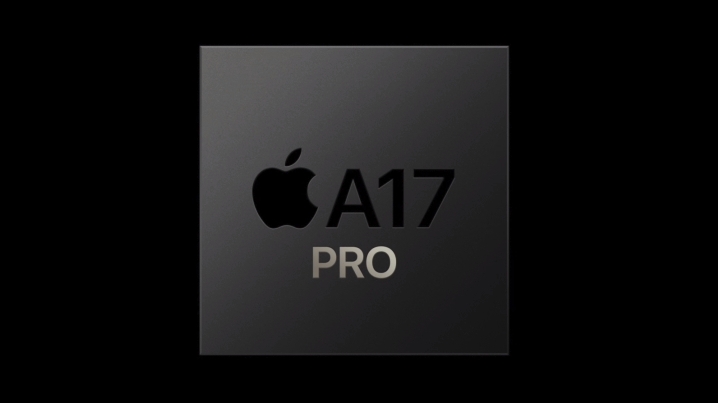
While Google has always issued the excuse that its custom chips are all about machine learning and AI, the Pixel 8 Pro isn’t a faultless performer in this regard either. We noticed that it stumbles quite a bit when you edit photos with the new Magic Editor, or when you use the new AI wallpaper feature.
Of course, this could all be a software issue rather than a hardware one. On that front, this is very much apples and oranges. You either like iOS best, with its slick and seamless walled garden approach, or you prefer the more free-wheeling and customisable Android way of doing things.
In truth, the two operating systems are way closer in style and approach these days that most of their rabid fans would like to admit, and each has borrowed liberally from the other to get to this stage. Indeed, we’ve got to the point where personal preference and platform lock-in (which apps, services, and other devices you use) matter way more than any qualitative comparison we could make.
One thing we will note in both platforms’ favour is that these are two of the best-supported phones on the market. You can expect at least seven years of ongoing software support with both, which is way above the industry average.
Google Pixel 8 Pro vs iPhone 15 Pro: battery
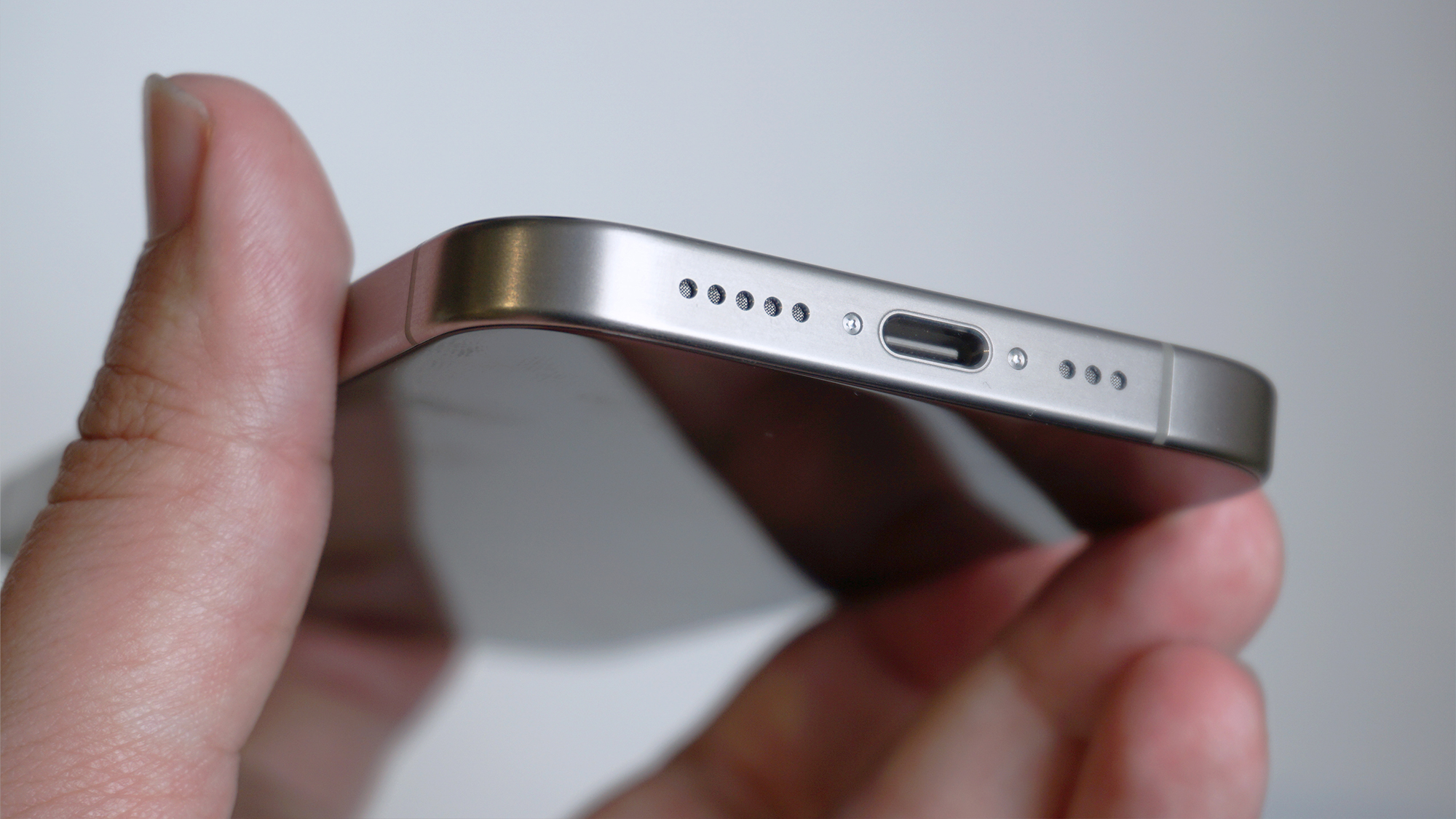
The pronounced difference in physical size means that the Pixel 8 Pro has a large 5,050mAh battery, while the iPhone 15 Pro has a relatively piddly 3,274mAh cell.
That’s not the easy win for Google you might think in terms of stamina, though. For one thing, the Pixel 8 Pro’s battery has to drive a bigger, brighter, sharper display and a less efficient processor. For another, Android is historically a little hungrier with its power resources than iOS.
The two companies make slightly different all-day claims. Apple quotes 23 hours of video playback, while Google more generally says that you can get 24 hours of battery life out of the Pixel 8 Pro. All we can say is that both will generally get you through a full day of usage without too much sweat.
Interestingly, Apple has drawn its smartphone range closer to Android with the adoption of USB-C charging, meaning these two phones could conceivably share the same charger. Which is handy, because neither manufacturer gives you a charging brick in the box.
If you’re shopping for an optimal charger for either, the Pixel 8 Pro supports 30W, while the iPhone 15 Pro supports up to 27W. Neither is particularly fast in the grand scheme of things.
In our experience, both phones can get to 50% in around 30 minutes, though while the Pixel 8 Pro can bomb on to 100% within an hour, the iPhone 15 Pro took 1 hour 35 minutes to do the same.
Google Pixel 8 Pro vs iPhone 15 Pro: verdict
Despite being similarly priced these are in many ways very different phones. The Pixel 8 Pro has a bigger, arguably slightly better screen, its cameras can zoom further, it makes greater use of AI, it has a temperature sensor, its battery life seems slightly better, and its design is very different.
But the iPhone 15 Pro is more powerful and more compact, and while its cameras include generally smaller numbers in their specs, the actual performance is similarly impressive.
For most people, of course, the choice will simply come down to which ecosystem they’re most wedded to: Apple’s or Google’s. For others, the decision will hinge on how big you like your phones.
If you were to force us to choose an outright winner, we’d have to go with the iPhone 15 Pro on balance – we simply rate the phone higher – but there are plenty of asterisks at the end of that recommendation.
Get daily insight, inspiration and deals in your inbox
Sign up for breaking news, reviews, opinion, top tech deals, and more.
James is a freelance phones, tablets and wearables writer and sub-editor at TechRadar. He has a love for everything ‘smart’, from watches to lights, and can often be found arguing with AI assistants or drowning in the latest apps. James also contributes to 3G.co.uk, 4G.co.uk and 5G.co.uk and has written for T3, Digital Camera World, Clarity Media and others, with work on the web, in print and on TV.